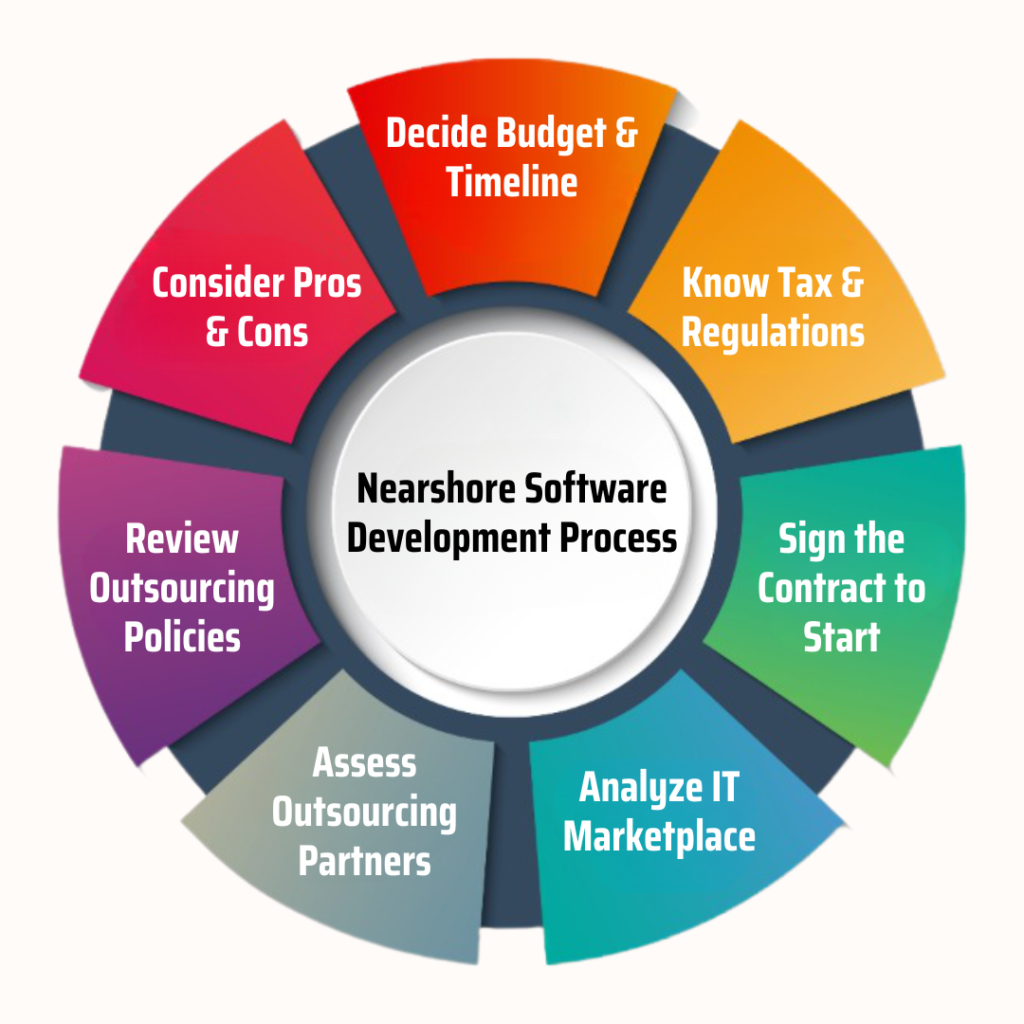Nearshore software development teams offer a strategic advantage in today’s global market, fostering seamless collaboration and enhanced project efficiency. By exploring the benefits, factors to consider, best practices, and challenges faced by these teams, organizations can make informed decisions for successful partnerships.
When it comes to nearshore software development teams, proximity, communication, and effective management play crucial roles in driving project success. Let’s delve deeper into how these teams can revolutionize the way businesses approach software development.
Benefits of Nearshore Software Development Teams
When it comes to software development, choosing a nearshore team can offer several advantages over offshore or onshore options. From cost-effectiveness to improved communication, nearshoring can streamline project processes and foster collaboration.
Cost-Effectiveness and Improved Communication
- Nearshore teams often offer a more competitive pricing structure compared to onshore teams, without sacrificing quality.
- Reduced travel costs and time zone proximity make communication more efficient, leading to quicker feedback loops and better alignment between teams.
Time Zone Proximity Enhancing Collaboration
- Being in closer time zones allows for real-time communication and quicker responses to queries or issues, improving overall project efficiency.
- Overlap in working hours between nearshore teams and clients can lead to faster decision-making and problem-solving during the development process.
Comparison with Other Outsourcing Options, Nearshore software development teams
- Compared to offshore teams, nearshore teams offer cultural alignment, similar time zones, and easier travel logistics, resulting in smoother collaboration and minimized risks related to miscommunication.
- When compared to onshore teams, nearshore options can provide cost savings without compromising quality, making it a cost-effective solution for businesses looking to outsource software development.
Factors to Consider When Choosing Nearshore Software Development Teams
When choosing nearshore software development teams, several key factors need to be taken into consideration to ensure a successful collaboration. Factors such as language proficiency, cultural compatibility, legal considerations, business environment similarity, time zone alignment, travel accessibility, and ease of coordination play a crucial role in the decision-making process.
Language Proficiency and Cultural Compatibility
Language proficiency is essential for effective communication between your team and the nearshore developers. It is crucial to ensure that the team you choose has members who are fluent in the language you prefer to communicate in. Cultural compatibility is also important to avoid misunderstandings and ensure a harmonious working relationship.
Legal Considerations and Business Environment Similarity
Legal considerations such as data protection laws and intellectual property rights should be thoroughly assessed before partnering with a nearshore team. Ensuring a similar business environment in terms of regulations and practices can help streamline the collaboration and reduce potential conflicts.
Time Zone Alignment and Travel Accessibility
Having a nearshore team in a similar time zone can facilitate real-time communication and collaboration, making it easier to coordinate tasks and meetings. Travel accessibility is also a crucial factor to consider, especially if on-site visits or meetings are required for project milestones or discussions.
Examples of Successful Collaborations
Companies like XYZ Inc. successfully collaborated with nearshore software development teams from countries like Mexico and Costa Rica. By considering factors such as language proficiency, cultural compatibility, legal considerations, business environment similarity, time zone alignment, and travel accessibility, these collaborations resulted in efficient project delivery and high-quality outcomes.
Best Practices for Managing Nearshore Software Development Teams

Managing nearshore software development teams requires a unique set of best practices to ensure effective collaboration and successful project outcomes. Here are some key strategies to consider:
Design a communication strategy tailored for remote collaboration
Effective communication is essential for remote teams to stay connected and aligned. Establish clear channels for communication, set regular meetings, and leverage collaboration tools to facilitate real-time interactions.
Organize project management tools and methodologies suitable for distributed teams
Implement project management tools that support remote work, such as task tracking systems, version control platforms, and virtual Kanban boards. Adopt agile methodologies to promote transparency and adaptability in project workflows.
Elaborate on establishing trust and building strong relationships across borders
Building trust among team members is crucial for fostering a positive working environment. Encourage open communication, celebrate achievements, and offer support to team members to create a sense of camaraderie and mutual respect.
Share tips for effective team integration and cultural exchange
Promote cultural awareness and sensitivity within the team to bridge any cultural gaps and enhance collaboration. Organize virtual team-building activities, encourage knowledge sharing, and celebrate diversity to create a unified team culture.
Challenges Faced by Nearshore Software Development Teams

When it comes to nearshore software development teams, there are several challenges that can arise due to factors like language barriers, differing work cultures, communication issues, data security risks, and time zone differences. Overcoming these obstacles is crucial to ensure the success of remote software development projects.
Language Barriers and Differing Work Cultures
Language barriers can lead to misunderstandings and misinterpretations in communication, affecting the overall project progress. Differing work cultures may result in conflicting approaches to problem-solving and decision-making. To overcome these challenges, it is essential to establish clear communication channels, provide language training if necessary, and promote cross-cultural understanding among team members.
Strategies to Overcome Communication Challenges
- Implement regular video conferences and virtual meetings to enhance communication.
- Use collaboration tools like Slack, Microsoft Teams, or Trello for real-time communication and project tracking.
- Encourage open and transparent communication among team members to address issues promptly.
- Provide language training and cultural sensitivity workshops to improve cross-border communication.
Data Security and Intellectual Property Protection Risks
Data security and intellectual property protection are critical concerns when working with nearshore software development teams. To mitigate risks, it is essential to:
- Implement strict data protection policies and encryption protocols.
- Sign non-disclosure agreements (NDAs) with all team members to safeguard sensitive information.
- Conduct regular security audits and assessments to identify vulnerabilities and strengthen security measures.
Addressing Time Zone Differences in Project Planning
To manage time zone variations effectively, consider the following strategies:
- Establish overlapping work hours for team collaboration and communication.
- Use project management tools with built-in time zone features to schedule meetings and track progress.
- Implement a rotating schedule for team members to accommodate different time zones.
- Clearly define project timelines and deliverables to ensure everyone is aligned on deadlines.
Ultimate Conclusion

In conclusion, nearshore software development teams present a promising avenue for businesses seeking cost-effective solutions and streamlined operations. By understanding the nuances of working with nearshore teams, organizations can unlock a wealth of opportunities for growth and innovation in the digital landscape.
FAQ Insights: Nearshore Software Development Teams
What are the key benefits of nearshore software development teams?
Nearshore teams offer advantages like cost-effectiveness, improved communication, and enhanced collaboration due to proximity.
How important is time zone proximity when working with nearshore teams?
Time zone proximity can significantly enhance collaboration and project efficiency by minimizing communication delays.
What challenges are commonly faced by nearshore software development teams?
Challenges may include language barriers, differing work cultures, and addressing time zone differences in project planning.

